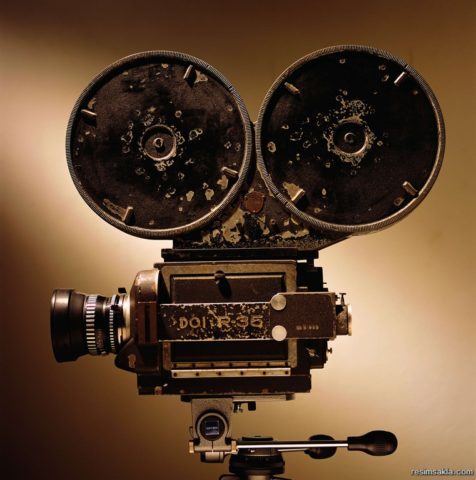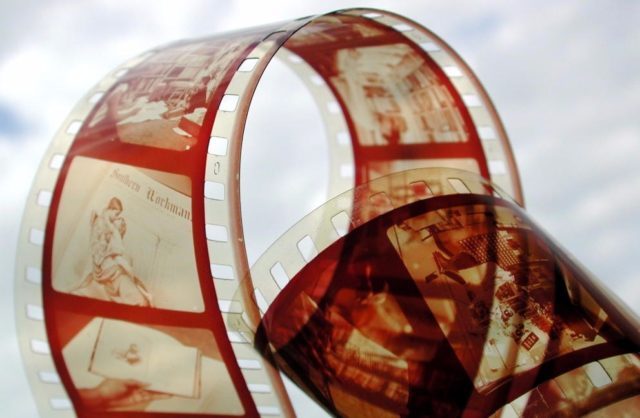One of the greatest inventions in the human history is Cinematography. Today it is very difficult to imagine our lives without having the privilege to witness the wonderful film productions that can recreate both fictitious and true stories, where we see reflected many of our dreams and more intimate desires through the also called “Big Screen”.
The authorship of this invention is attributed to the Lumière brothers (Auguste and Louis), both of French origin, who made the first projection of motion pictures and devoid of sound in 1895, through an apparatus that they called cinematograph, from which derives the name of this technique. Although it was initially only visual, many years after that first exhibition, in 1927, soundtracks were added to the tapes of images or stills. That was how cinematography became a fully audiovisual technique.

Cinematography (also known, for short, as cinema) is the technique that consists of projecting frames very quickly and successively to create the impression of movement. Etymologically speaking, the word cinematography was a neologism created at the end of the 19th Century. It is composed of the Greek words Kines, meaning “movement”; and by Graphos, meaning “written representation” or “engraved image”. The term was used to define the technique of “recorded image in motion”.
The cinematographic technical team refers to the set of people that has to deal with the realization, organization, division, and delimitation of functions and tasks corresponding to the process of filming a film. Without this equipment, it would not be possible to carry out any process of film production.
It is very important the excellent coordination of the film work among the areas of production, direction, storyboard, screenplay, script, montage, editing, sound, photography, art, and stunts. Now, a brief description of each area is shown as follows:
In the first place, the Production area takes care of the organizational and technical aspects of the making of a film. It is also in charge of the recruitment of staff, the financing of the work, and the contact with the distributors for the dissemination of the work.
The Management is responsible for directing the filming of a film. That is, it is responsible for the staging, giving the guidelines to the actors and technical team, making all creative decisions, thus following their style or vision.
The Storyboard is a set of illustrations that are used to define the sequences, as well as the variations of plane, gestures, and positions of the actors, in each one of the scenes before rolling it; in it, we see comics as it was the complete film.
The Script area adapts any story, whether literary or not and transforms it into a succession of acts and scenes.
In relation to the Montage, this one focuses on the assembly of the successive taking of recorded scenes in a photographic film, soon to be sequenced in narrative form.
The Sound area is responsible for the collection and administration of all the sound and musical effects produced during the filming of a film, in order to generate the original soundtrack.
Photography is the area in charge of determining how the film is to be seen, that is, it determines, depending on the demands of the director and the history, the visual aspects of the film: framing, lighting, optics to be used, camera movements, etc.

The Art area is in charge of the overall aesthetics of the film.
And finally, the Stunts are people who perform the role of being double-risk or double action. That is, they are the ones who replace the main actors in the scenes of high risk or potential danger.
On the other hand, within the cinematographic approach, the label gender refers to the method of classifying films into groups. Typically, these genres group films that share certain similarities and topics, both in narrative and in staging.
Although there is a wide variety of cinematographic genres and listing them all would be too arduous and extensive work, we can mention the most known genres in the following categories: a) Comedy, b) Drama, c) Animation, d) Science Fiction (also Sci-Fi), e) Documentary, f) Musical, g) Action, h) Suspense, and i) Romance. To better understand their respective characteristics, we can describe them in the following way:
Comedy is a genre that always tries to amuse or make the spectator laugh through a plot with diverse entanglements and conflicts, singular characters, witty dialogues and complacent endings.
Drama is represented by those films that approach personal and social conflicts with a spirit and a realistic resolution.
The animation is made possible through the movement obtained by juxtaposing frames that have been conceived individually. They are based on different formats (cartoons, puppets, computer graphics, etc.) that usually disregard the cinematic reproduction of reality.
The genre of Science-Fiction is characterized by the narration of stories in an imaginary future, ordinarily characterized by a greater technological development.
The Documentary consists of those audiovisual works that lack characters, staging or any kind of intervention in the reality that shows and states the purpose of making known that reality.
The Musical is a genre that emphasizes the importance to the spectacle of music through songs, dances or choreographies. They even could be considered musical biographies of composers or interpreters.
The cinematic style refers to the optics and the perspective with which filmmakers seek to represent the plot and sequence of scenes of each film production. Even much of the personality and moral value system of these filmmakers is reflected in the cinematic style they finally adopt.
Based on all of the aforementioned, we can say that cinematography is both a highly Audiovisual Technique and an Art in the way of narrating stories or describing events sequentially. The cinematography is, in the latter sense, considered as the Seventh Art, in a clear allusion to the other 6 classical arts; namely, Architecture, Dance, Sculpture, Music, Painting, and Poetry (literature), according to the parameters used in ancient Greece.
Through the “magic of images in motion”, we can be entertained by imagining ourselves living ideal realities. And the fact of seeing them reflected in the form of images and sounds, make them last much longer in memory than our own lives.

